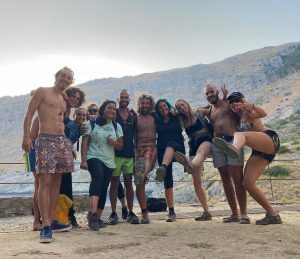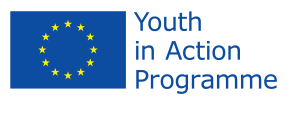Posted on October 6, 2019
Buoy Camp 2019
During the summer of 2019, other than our main project “la Baia al fondo del sentiero”, which is a project of protection in the bay of Ieranto, the project MARE also actively participated in another project in the same B area of the marine park.
As you already know the marine park is divided in 3 zones of protection. The territory of a marine protected area has a division in zones with different levels of protection – caled ZONE A, ZONE B and ZONE C. The intention is to assure full nature protection (ZONE A), also correct management of territory and use of eco-tourism (ZONE B), for the maintenance and development of local economy (ZONA C) and combining the conservation of environmental values with the sustainable use of the marine environment.
In the yellow zone you can find a place called “le Mortelle” where the people tend to forget the rules of the marine protected area, and our home work was, obviously, to remind them the importance of this zone, which is more protected than the green zones.
For this 5 years ago the main protected area of Punta Campanella made the “Buoy Camp” to encourage people to discover this beautiful marine environment without causing excessive damage.
In the camps limts there are 35 buoys available for seafarers. In the camp the smaller boats are moored nearer to the coast while the larger ones are moored more towards the open sea.
The mooring camp was made with the aim of protecting a very important plant for the marine ecosystem called Posidonia oceanica.
This plant has a slow growth, it produces oxygen and food for other species, and prevents coastal erosion: the objective of the buoy camp is to avoid anchoring which is destructive for the plant.
The buoy camp is divided by three lines based on the length of the boat:
The first row from buoy 1 to buoy 11 is for boats up to 10 meters
The second row from buoy 12 to buoy 29 is for boats from 10 to 20 meters
The third row from buoy 30 to buoy 35 is for boats over 20 meters
Data collected in June, July and August:
We had 1354 boats up to 10 m, 373 boats between 10-20m, 8 boats wider than 20 m and 3 boats during the night.
What was our role? What we did in practice? We were there to explain how this mooring camp works.
“Here we have the buoys to prevent the boats from anchoring, because we want to protect an aquatic plant: the Posidonia. Of course it is forbidden to fish in this area without authorisation. Enjoy the rich environment that is found in this area”.
We concluded by saying the rental price of a buoy for the whole day, this price varies depending on the length of the boat. The money we collected allows us to maintain the buoys. The installation system is the American “Manta ray” which does not destroy the Posidonia and each of the buoys costs 200,000 euros. And we always added that beyond the buoys further west is the green area where the anchoring is allowed.
This project has allowed us to work with other people of the marine park, to gain experience on a boat and to learn how to tie knots that seemed complicated at the beginning. At first it was difficult for us because there were many things to get used to and it was easy to make mistakes (and make our teachers angry, but over time we improved on two things: autonomy that is required in this work and the Neapolitan language, of course.







